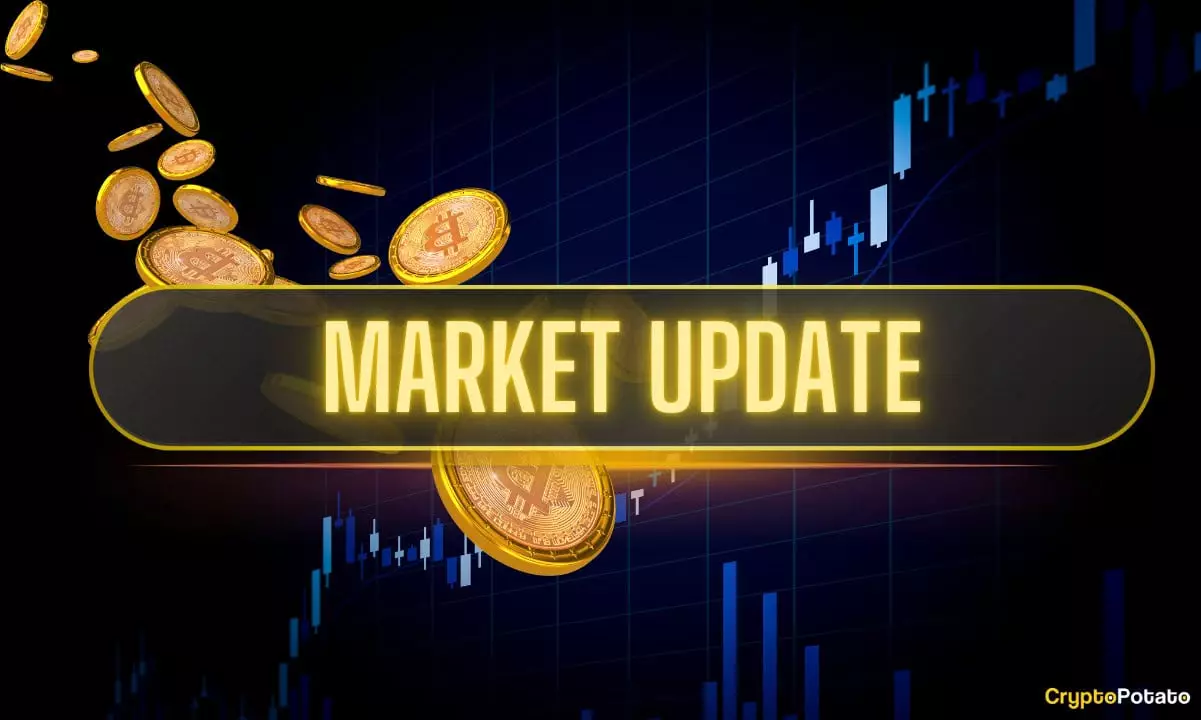The past week in cryptocurrency has been nothing short of a tempest, mirroring the turbulence in traditional markets. However, rather than being an isolated anomaly, this correlation highlights an inevitable truth: as institutional involvement deepens, crypto’s fate increasingly ties to geopolitical and macroeconomic events. Bitcoin, despite appearing stable on weekly charts with prices hovering just above $106,000, experienced sharp swings that revealed underlying fragility beneath its so-called “digital gold” veneer. The catalyst? Escalating tensions between Iran and Israel, dragging the markets through heightened uncertainty and knee-jerk liquidations worth over $1 billion.
Geopolitics and Market Reactions: A Dangerous Tango
In mid-June, news broke that the U.S. was gearing up to strike Iranian nuclear sites in support of Israel—a move that sent Bitcoin plunging below the $100,000 mark for the first time in weeks. It was a stark reminder that despite crypto’s touted independence from traditional forces, it cannot fully escape the ripples of global conflict. Yet, what followed was almost theatrical: a seemingly staged Iranian retaliation against a U.S. base in Qatar that caused minor damage, leading to an abrupt ceasefire announcement from former President Donald Trump. Bitcoin swiftly rebounded, surging back above $108,000 as relief washed over jittery investors.
This episode exposes a broader uncomfortable truth: crypto markets are vulnerable to political theater and brief moments of hope, much like legacy assets. The fabled uncorrelated nature of Bitcoin is increasingly mythologized, especially as institutional actors bring traditional market psychology along for the ride. While some hail Bitcoin’s quick recovery as a testament to its resilience, I argue that this volatility and susceptibility to geopolitical risk only reveal crypto’s growing integration—and dependence—on the global financial ecosystem.
Chainlink and Mastercard: Adoption or Marketing Hype?
Amid this chaos, the announcement of a partnership between Chainlink, a renowned oracle provider, and Mastercard, one of the world’s largest payment processors, stood out. On paper, enabling 3 billion Mastercard users to buy crypto is the kind of breakthrough that proponents say signals mainstream adoption. But we should temper enthusiasm with skepticism. Partnerships like these often take years to translate into tangible user engagement or regulatory clarity—especially given current global scrutiny of crypto.
While the tie-up might push the narrative of widespread crypto adoption, it could also merely be an elaborate marketing strategy catering to investors hungry for growth stories. Without strong regulatory frameworks and clear consumer protections, such partnerships risk raising unrealistic expectations while exposing billions of users to volatile assets they may not fully understand.
The Lingering Ripple Case and Legal Uncertainty
Legal battles continue to shadow the crypto space. The ongoing SEC vs. Ripple saga perfectly illustrates the stalling effect regulatory ambiguity has on innovation and investment. Markets had hoped for swift resolution, but the court’s rejection of an indicative ruling ensures protracted uncertainty. Ripple now faces a tough decision: prolong a costly appeal or walk away, potentially conceding its future in the US marketplace.
This continued limbo isn’t just a headache for XRP holders; it’s a systemic problem for the entire industry. Without clear, prompt rulings, American crypto projects suffer from investor hesitancy and competitive disadvantages compared to overseas rivals. A center-right liberal stance would advocate for balanced regulation—firm but fair—to protect investors without stifling growth. The government’s procrastination here borders on negligence, punishing innovation rather than fostering it.
Bitcoin’s Unexpected Absorption of Massive Selling Pressure
Perhaps the most striking development was the market’s ability to absorb nearly 720,000 Bitcoins dumped primarily by new investors over recent weeks. Instead of cascading into a collapse, the price held steady, drawing parallels to previous big rallies like those from $28,000 to $60,000 and then from $60,000 to $100,000. The Long-Term Holder/Short-Term Holder ratio is on the rise—a historically bullish signal that suggests steady confidence among established investors.
This data-driven insight reminds us that despite the jitters and headline-grabbing liquidations, a committed core of investors is solidifying Bitcoin’s base. It’s a bullish foundation that suggests the market is maturing and beginning to withstand shocks that would previously have triggered panicked selloffs. However, this doesn’t equate to stability—it merely highlights Bitcoin’s ongoing evolution into a hybrid asset subject to both speculative fervor and slow-building institutional conviction.
The Altcoin Bleeding and Bitcoin’s Reign
While Bitcoin engineered a cautious rebound, altcoins suffered significant setbacks, with many losing between 4% and 10% of their value. This divergence underscores Bitcoin’s role as the flagship crypto—a safe haven when uncertainty hits speculative assets hard. Yet, it also reveals a significant weakness: the altcoin market’s immaturity and vulnerability.
Passive reliance on Bitcoin’s dominance may lull investors into complacency, but the broader ecosystem’s health depends on diverse projects thriving. The painful drops in Ethereum, Ripple, Cardano, and Solana revealed that far from being a unified market, crypto is fragmented, and altcoins remain highly vulnerable to both geopolitical shocks and regulatory headwinds.
Stablecoins and the Future of Digital Finance
Another underappreciated story is the rise of stablecoin company Circle, whose valuation has soared to $66 billion—surpassing the supply of USDC they manage. This reflects growing investor optimism about stablecoins’ critical role in bridging traditional and crypto finance. Their success signals that digital currencies may be moving beyond speculative instruments towards more practical, utility-driven applications.
Still, as a center-right observer, I caution that this growth must be met with prudent oversight. Stablecoins sit on a precarious balance: offering rapid, frictionless transactions but posing systemic risks without clear safeguards. Regulatory clarity around reserves, redemption rights, and transparency is essential before stablecoins can truly underpin the next generation of financial innovation.
—
Cryptocurrency markets are at a crossroads. They reveal both incredible potential and critical vulnerabilities when faced with real-world dynamics—from geopolitical conflicts to legal uncertainty and institutional shifts. While Bitcoin’s resilience is commendable, it should not mask the broader market’s fragility or the urgent need for responsible regulation and sober investor expectations. This is crypto’s raw and unfiltered growth—messy, volatile, yet undeniably revolutionary.















